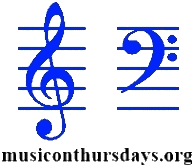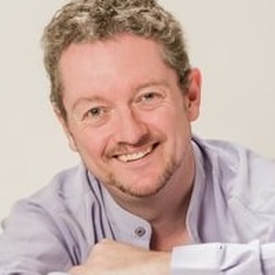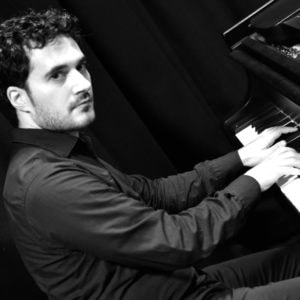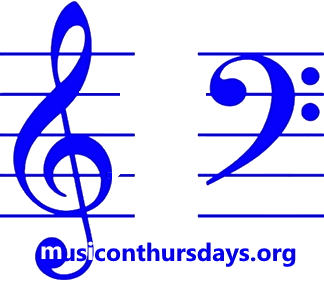12.30pm, Thursday 7th September 2017
William Robert Allenby
|
Sponsors: Patricia Morgan Optician Julie West Solicitor Supported by: Leatherhead Concert & Arts Society |
Programme
Antonio Caldara (1670-1736)
from La costanza in amor vince l'inganno,(1710) Sebben crudele Francesco Durante (1684-1755) Danza Danza Tomasso Giordani (c1730-33 - before 1806) formerly attributed to Giuseppe Giordani (1751-1798) Caro Mio Ben Franz Peter Schubert (1797-1828) from Winterreise Op 89 (1827) Die Post Gefror'ne Tränen after William Shakespeare's Two Gentlemen of Verona, translated by Eduard von Bauernfeld An Sylvia - Who is Sylvia Ralph Vaughan Williams (1872-1958) setting of My Orch'd in Linden Lea, William Barnes (1801-1886) Linden Lea (1901) John Ireland (1879-1962) text: John Masefield (1878-1967) (poem published 1902) Sea Fever (1913) Peter Warlock (1894-1930) text: John Masefield (1920) Captain Stratton's Fancy (1920) Wolfgang Amadeus Mozart (1756-1791) from Act 1, Scene 1, of the opera Die Zauberflöte - The Magic Flute (1791) Der Vogelfänger bin ich ja Giacomo Puccini (1858-1924) from the opera Tosca (1900) The Sacristan - Act One, Scene One Benjamin Britten (1913-1976) from the opera A midsummer Night's Dream (1960) Bottom's Dream Arthur Seymour Sullivan (1842-1900) from the comic opera Iolanthe (or The Peer and the Peri) (1882) When you're lying awake - The Nightmare Song Concert Duration: 50-60 minutes |
Free Concert, with a retiring collection to cover costs. Tea and coffee will be available after the concert.
William Robert Allenby
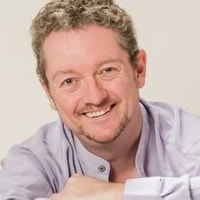
The British baritone, William Robert Allenby, won a 3 year Associated Board Entrance Scholarship to study with Derek Hammond-Stroud OBE at the Royal Academy of Music in 1986. Winner of the Wil Forge Award, the Peter Mooney Scholarship for singing and runner-up in the Wagner society competition, William was awarded the Barthel Prize for excellence (Concordia Foundation) in 2002 for advanced study in New York with the renowned American baritone and star of the Metropolitan Opera, Theodor Uppman.
Since the late 1980's he has developed a busy solo career in opera, oratorio, concerts, radio, and recital. He has appeared regularly in recital and concert around the UK since 1988, with his USA recital debut coming in 2002 in New York (St Marks in the Bowery Concert Series). His BBC debut came in 1989 singing the role of the Herald (The Grand Duke) in the BBC Radio Savoy series, and he has appeared many times as a star singer on Friday Night is Music Night for Radio 2. He has made many international concert appearances with leading Italian music ensemble Mala Punica at many of the world's leading early music festivals in Holland, Belgium, Italy and France.
An opera soloist of distinction, notable guest appearances include: Alcindoro La Boheme Royal Opera Covent Garden, Sacristan Tosca English National Opera and Welsh National Opera, Dulcamara Elixir of Love ENO, Starek Jenufa Scottish Opera, Walter Raleigh Roberto Devereux WNO (also for Radio 3), Pish-Tush The Mikado ENO, Somarone Beatrice and Benedict WNO, Dr Reischmann Elegy for Young Lovers ENO and Dr Bartolo Barber of Seville for WNO. William has also had a special relationship with London's Opera Holland Park since 1999. International opera engagements have included; Araspe Tolomeo Musiktheater Transparent on tour throughout Belgium and Holland, Alfio Cavalleria Rusticana Saigon Opera House, Marullo Rigoletto Bermuda Festival, and Morales Carmen for Opera Ireland.
William is in demand as a vocal coach and singing teacher for many established opera soloists at home and abroad. He has recently prepared clients for principal roles with; Opera North, Scottish Opera, Welsh National Opera, English National Opera, Opera Holland Park, Grange Park Opera, La Monnaie,
Opera de Lyon, Dresden Opera, Dutch National Opera and the Teatro Real Madrid.
William Robert Allenby is an experienced adjudicator and assessor, giving regular workshops and masterclasses. He is also an external moderator for Royal Holloway, University of London. He is the artistic director of London Chamber Voices, a visiting professor at the Polish National Opera Young Artists Programme and Opera Academy in Warsaw and holds teaching positions at both the University of Chichester and the London College of Music (University of West London). He was made a Fellow of the London College of Music in 2016.
Since the late 1980's he has developed a busy solo career in opera, oratorio, concerts, radio, and recital. He has appeared regularly in recital and concert around the UK since 1988, with his USA recital debut coming in 2002 in New York (St Marks in the Bowery Concert Series). His BBC debut came in 1989 singing the role of the Herald (The Grand Duke) in the BBC Radio Savoy series, and he has appeared many times as a star singer on Friday Night is Music Night for Radio 2. He has made many international concert appearances with leading Italian music ensemble Mala Punica at many of the world's leading early music festivals in Holland, Belgium, Italy and France.
An opera soloist of distinction, notable guest appearances include: Alcindoro La Boheme Royal Opera Covent Garden, Sacristan Tosca English National Opera and Welsh National Opera, Dulcamara Elixir of Love ENO, Starek Jenufa Scottish Opera, Walter Raleigh Roberto Devereux WNO (also for Radio 3), Pish-Tush The Mikado ENO, Somarone Beatrice and Benedict WNO, Dr Reischmann Elegy for Young Lovers ENO and Dr Bartolo Barber of Seville for WNO. William has also had a special relationship with London's Opera Holland Park since 1999. International opera engagements have included; Araspe Tolomeo Musiktheater Transparent on tour throughout Belgium and Holland, Alfio Cavalleria Rusticana Saigon Opera House, Marullo Rigoletto Bermuda Festival, and Morales Carmen for Opera Ireland.
William is in demand as a vocal coach and singing teacher for many established opera soloists at home and abroad. He has recently prepared clients for principal roles with; Opera North, Scottish Opera, Welsh National Opera, English National Opera, Opera Holland Park, Grange Park Opera, La Monnaie,
Opera de Lyon, Dresden Opera, Dutch National Opera and the Teatro Real Madrid.
William Robert Allenby is an experienced adjudicator and assessor, giving regular workshops and masterclasses. He is also an external moderator for Royal Holloway, University of London. He is the artistic director of London Chamber Voices, a visiting professor at the Polish National Opera Young Artists Programme and Opera Academy in Warsaw and holds teaching positions at both the University of Chichester and the London College of Music (University of West London). He was made a Fellow of the London College of Music in 2016.
Emanuele Mollica
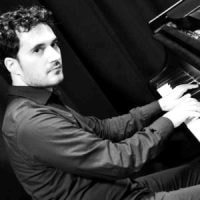
Emanuele Mollica is an Italian pianist, with a great deal of experience as a soloist, repetiteur, vocal coach and accompanist. He achieved a degree in piano in Livorno, with the result of 10/10 and a special mention of honour. Since graduating he has forged a busy career, developing a particular passion for working in the field of opera.
In Italy he has worked as both repetiteur and Maestro Concertante for many productions in Florence (Rami Musicale), and also had the honour of being selected as a repetiteur and Maestro Concertante in Milan (Accademia Teatro Alla Scala). Recent opera productions in Italy include; La Serva Padrona, La Boheme, La Traviata, Rigoletto and La Scala di Sieta.
Since moving to London, Emanuele has developed a busy private coaching and teaching practice and works as repetiteur for Emanuele Moris (an esteemed vocal coach from the Royal Opera Covent Garden). Recent operas on which he has worked include; La Traviata and Tosca. Other engagements this year include performances of the opera A Hand of Bridge (Barber) for London Chamber Voices, and vocal coaching and accompanying for William Robert Allenby's summer masterclasses at the CAA in central London. Emanuele is also in demand as a vocal coach and repetiteur at the London College of Music (University of West London).
In Italy he has worked as both repetiteur and Maestro Concertante for many productions in Florence (Rami Musicale), and also had the honour of being selected as a repetiteur and Maestro Concertante in Milan (Accademia Teatro Alla Scala). Recent opera productions in Italy include; La Serva Padrona, La Boheme, La Traviata, Rigoletto and La Scala di Sieta.
Since moving to London, Emanuele has developed a busy private coaching and teaching practice and works as repetiteur for Emanuele Moris (an esteemed vocal coach from the Royal Opera Covent Garden). Recent operas on which he has worked include; La Traviata and Tosca. Other engagements this year include performances of the opera A Hand of Bridge (Barber) for London Chamber Voices, and vocal coaching and accompanying for William Robert Allenby's summer masterclasses at the CAA in central London. Emanuele is also in demand as a vocal coach and repetiteur at the London College of Music (University of West London).
Concert at Home
If you cannot be with us at the lunchtime concert
you can enjoy a similar Concert at Home by clicking through the videos or recordings below:
you can enjoy a similar Concert at Home by clicking through the videos or recordings below:
William Allenby has provided the following notes which I shall use this week in place of my own remarks:
Antonio Caldara was a baroque composer born in Venice (exact date not known) in 1670 and he died on the 28th December in 1736. Although he wrote some 87 operas in total, his notable works were relatively small in number, and only a handful of operas and oratorios written between c.1700 and 1730 remain. Several other individual arias have remained strongly in the repertoire despite the fact that the operas to which they belonged failed to become successful. A notable example is Sebben Crudele (an aria from La costanza in amor vince l'inganno,1710). The simplicity of the melodic writing allied to the clever harmonic progressions give this song an intensity and beauty, with many of the greatest singers of our age including it in their recordings and performances.
We hear tenor Javier Camarena, at the Teatro Obrero, Zamora, Michoacan, Mexico, in the
Ars Vocalis México, International Vocal Academy & Festival, September 2012 :
Antonio Caldara was a baroque composer born in Venice (exact date not known) in 1670 and he died on the 28th December in 1736. Although he wrote some 87 operas in total, his notable works were relatively small in number, and only a handful of operas and oratorios written between c.1700 and 1730 remain. Several other individual arias have remained strongly in the repertoire despite the fact that the operas to which they belonged failed to become successful. A notable example is Sebben Crudele (an aria from La costanza in amor vince l'inganno,1710). The simplicity of the melodic writing allied to the clever harmonic progressions give this song an intensity and beauty, with many of the greatest singers of our age including it in their recordings and performances.
We hear tenor Javier Camarena, at the Teatro Obrero, Zamora, Michoacan, Mexico, in the
Ars Vocalis México, International Vocal Academy & Festival, September 2012 :
Francesco Durante (b Frattamaggiore, 31 March 1684, d Naples, 30 Sep 1755) was an Italian composer of the 18th century Neapolitan school, venerated as the finest composition teacher in Naples. Once a pupil of Scarlatti, Pergolesi numbered among his many students. He made his name mainly in sacred works, as well as with 6 harpsichord sonatas, 8 Concerti per quartetto, and a number of individual songs.
Danza Danza fanciulla gentile is one of his most popular songs in modern recital programmes. The evocation of the dance is portrayed in fluid vocal phrases which mimic a dance motion, in which the singer urges a young girl to dance without stopping.
Here is baritone Willnard Anderson, student of Music Performance and Music Education,
in his Freshman year at the University of Kentucky :
Danza Danza fanciulla gentile is one of his most popular songs in modern recital programmes. The evocation of the dance is portrayed in fluid vocal phrases which mimic a dance motion, in which the singer urges a young girl to dance without stopping.
Here is baritone Willnard Anderson, student of Music Performance and Music Education,
in his Freshman year at the University of Kentucky :
Until recently the popular aria Caro Mio Ben was attributed to Guiseppe Giordani (1751-1798), however after recent research it is now commonly regarded to have been the work of his brother, Tommaso Giordani (b c1730-1733, d sometime before 24 Feb 1806). Tomasso was an Italian composer, born in Naples, who spent a good deal of his early life travelling around mainland Europe with his musical family. In 1764, he took up the post of musical director of the Smock Alley Theatre, Dublin, where he remained for three years.
Following this he went to London in 1767 where he remained for 16 years, successfully building something of a reputation as an opera composer. From 1873, he returned to live in Ireland for the remainder of his life. In addition to his output of a number of operas and theatrical works, he also wrote a large number of sonatas, concertos, overtures. It is unclear which work the beautiful (and justifiably famous) Caro Mio Ben comes from, but it has remained one of the most popular arias from the period.
This is operatic baritone Dmitri Hvorostovsky, with pianist Mikhail Arkadiev in 1990:
Following this he went to London in 1767 where he remained for 16 years, successfully building something of a reputation as an opera composer. From 1873, he returned to live in Ireland for the remainder of his life. In addition to his output of a number of operas and theatrical works, he also wrote a large number of sonatas, concertos, overtures. It is unclear which work the beautiful (and justifiably famous) Caro Mio Ben comes from, but it has remained one of the most popular arias from the period.
This is operatic baritone Dmitri Hvorostovsky, with pianist Mikhail Arkadiev in 1990:
Franz Peter Schubert (b Vienna, 31 Jan 1797; d Vienna, 19 Nov 1828) was an Austrian composer. During his short life he composed nearly one thousand works which can be categorised into choral, vocal, piano, chamber, orchestral music and dramatic works. His Fifth Symphony and the Trout Quintet, marked the beginning of his production of major instrumental masterpieces.
However, Schubert was famed for his prolific output of over 600 individual songs and his major song cycles; Schwanengesang (14 songs, 1828), Die schöne Müllerin (20 songs, 1823), Winterreise (24 songs, 1827).
Die Post and Gefror'ne Tränen both come from his largest song-cycle Winterreise.
The cycle is epic in structure and has become one of the pinnacles of achievement for recitalists throughout the western world. In Die Post, Schubert depicts the excitement of the protagonist awaiting a horse drawn postal delivery and the possibility of a letter from his love. This is ably achieved through the use of dotted triplet patterns in the piano, which vividly create the effect of the pounding of horses hooves.
It's time to listen to Ian Bostridge, with pianist Julius Drake,
in a 2015 concert in the Chamber Music Hall, of the Berlin Philharmonie :
However, Schubert was famed for his prolific output of over 600 individual songs and his major song cycles; Schwanengesang (14 songs, 1828), Die schöne Müllerin (20 songs, 1823), Winterreise (24 songs, 1827).
Die Post and Gefror'ne Tränen both come from his largest song-cycle Winterreise.
The cycle is epic in structure and has become one of the pinnacles of achievement for recitalists throughout the western world. In Die Post, Schubert depicts the excitement of the protagonist awaiting a horse drawn postal delivery and the possibility of a letter from his love. This is ably achieved through the use of dotted triplet patterns in the piano, which vividly create the effect of the pounding of horses hooves.
It's time to listen to Ian Bostridge, with pianist Julius Drake,
in a 2015 concert in the Chamber Music Hall, of the Berlin Philharmonie :
In Gefror'ne Tränen, the piano accompaniment depicts tears forming and falling by the use of staccato crotchets allied to a forlorn vocal line.
Let's hear a 1948 recording of Dietrich Fischer-Dieskau. The pianist is Klaus Billing :
Let's hear a 1948 recording of Dietrich Fischer-Dieskau. The pianist is Klaus Billing :
An Sylvia is one of three texts by William Shakespeare, set to music by Schubert. The song is in strophic form and contains three verses. The text of the peom, Who is Sylvia is taken from the play The Two Gentlemen of Verona, which was translated into German from the original English by Eduard von Bauernfeld. It was composed in a very rich period of his writing, coming just two years from Schubert's death. It has become one of his most celebrated individual songs.
I wasn't going to use a second recording of Dietrich Fischer-Dieskau, but I couldn't resist this 1957 recording with the wonderful accompanist Gerald Moore :
I wasn't going to use a second recording of Dietrich Fischer-Dieskau, but I couldn't resist this 1957 recording with the wonderful accompanist Gerald Moore :
Ralph Vaughan Williams (b Down Ampney, 12 Oct 1872, d London, 26 Aug 1958) was an English composer.
He studied at the Royal College of Music and Cambridge. He then studied with Bruch in Berlin (1897), and Ravel in Paris (1908).
He wrote six operas, one ballet and several symphonies, of which his Sea Symphony (1909) is arguably the greatest. His compositions also encompassed vocal-orchestral music, including his famous setting for solo voices and orchestra, Serenade to Music (1938), smaller choral works, a string quartet (1944) and a violin sonata (1954).
It was his study of folksong which facilitated some of his most lyrical writing. The influence of his love for the English folksong can be seen in his operas (particularly Hugh the Drover 1914), and most notably in the melodic writing in The Lark Ascending (for solo violin and orchestra), his Pastoral Symphony (1921) and the Sea Symphony. His major works for voice and piano also drew on the folksong tradition, most notably; On Wenlock Edge (1909-a Houseman cycle) and the 10 Blake Songs (1957).
He also composed many individual songs of which Linden Lea is one of his most well known. It is a setting of William Barne's poem, My Orcha'd In Linden Lea which Vaughan Williams completed in 1901. At the age of 29, Linden Lea was his first publication. The song is in three verses, with an overarching strophic form, with various modifications in the piano writing to convey the emotions of the different verses.
Let us hear a soprano for this song. Amanda Li is accompanied by Timothy Kwok, in a 2016 recital in the Hong Kong City Hall Theatre :
He studied at the Royal College of Music and Cambridge. He then studied with Bruch in Berlin (1897), and Ravel in Paris (1908).
He wrote six operas, one ballet and several symphonies, of which his Sea Symphony (1909) is arguably the greatest. His compositions also encompassed vocal-orchestral music, including his famous setting for solo voices and orchestra, Serenade to Music (1938), smaller choral works, a string quartet (1944) and a violin sonata (1954).
It was his study of folksong which facilitated some of his most lyrical writing. The influence of his love for the English folksong can be seen in his operas (particularly Hugh the Drover 1914), and most notably in the melodic writing in The Lark Ascending (for solo violin and orchestra), his Pastoral Symphony (1921) and the Sea Symphony. His major works for voice and piano also drew on the folksong tradition, most notably; On Wenlock Edge (1909-a Houseman cycle) and the 10 Blake Songs (1957).
He also composed many individual songs of which Linden Lea is one of his most well known. It is a setting of William Barne's poem, My Orcha'd In Linden Lea which Vaughan Williams completed in 1901. At the age of 29, Linden Lea was his first publication. The song is in three verses, with an overarching strophic form, with various modifications in the piano writing to convey the emotions of the different verses.
Let us hear a soprano for this song. Amanda Li is accompanied by Timothy Kwok, in a 2016 recital in the Hong Kong City Hall Theatre :
John Ireland (b Bowdon, 13 Aug 1879; d Rock Hill, 12 June 1962) was an English composer and pianist who studied with Stanford at the Royal College of Music (1897-1901). He served as organist and choirmaster at St Luke's Chelsea in London (1904-26) returning to teach at the RCM (1923-39).
He wrote a sequence of piano pieces, substantial chamber works and many song settings. Sea Fever is an atmospheric setting of a poem by John Masefield, composed in 1913 and first published in 1915. This is one of his most famous and celebrated songs. It is written in a minor key with haunting ascending arpeggio phrases at the end of each verse adding to the melancholy feel, prevalent throughout the song. The simple structure and starkness of the piano accompaniment helps to compliment the desolate tone of the original poem to great effect.
Time to listen to Bryn Terfel in a 1995 recording with Malcolm Martineau,
or would you like to hear Paul Robeson and Lawrence Brown on a crackly 78 from 1942 ? :
He wrote a sequence of piano pieces, substantial chamber works and many song settings. Sea Fever is an atmospheric setting of a poem by John Masefield, composed in 1913 and first published in 1915. This is one of his most famous and celebrated songs. It is written in a minor key with haunting ascending arpeggio phrases at the end of each verse adding to the melancholy feel, prevalent throughout the song. The simple structure and starkness of the piano accompaniment helps to compliment the desolate tone of the original poem to great effect.
Time to listen to Bryn Terfel in a 1995 recording with Malcolm Martineau,
or would you like to hear Paul Robeson and Lawrence Brown on a crackly 78 from 1942 ? :
|
|
|
Peter Warlock (b 30 Oct 1894, London, d London, 17 Dec 1930) was an English composer, born Philip Arnold Heseltine. He was largely self taught, and wrote choral music, a few instrumental pieces and a large output of songs. His songs, all characterised by an advanced level of word-painting, were wide-ranging in emotion, from darkly intense and desolate, through to amorous and boisterous.
Captain Stratton's Fancy falls into the final category. It is a raucous celebration of drink, in particular, Jamaican rum. Composed in 1920, it is his most famous drinking song, a setting of a poem by John Masefield. Interestingly it was the only one of Warlock's songs to be recorded during his own lifetime, by the bass Peter Dawson in 1927. Under his original name of Heseltine he also edited various English works and wrote a number of articles on musical topics.
We shall hear baritone Christopher Maltman, accompanied by Julius Drake in a 2007 live performance :
Captain Stratton's Fancy falls into the final category. It is a raucous celebration of drink, in particular, Jamaican rum. Composed in 1920, it is his most famous drinking song, a setting of a poem by John Masefield. Interestingly it was the only one of Warlock's songs to be recorded during his own lifetime, by the bass Peter Dawson in 1927. Under his original name of Heseltine he also edited various English works and wrote a number of articles on musical topics.
We shall hear baritone Christopher Maltman, accompanied by Julius Drake in a 2007 live performance :
Wolfgang Amadeus Mozart (b Salzburg, 27 Jan 1756; d Vienna, 5 Dec 1791), was a prolific Austrian composer of the classical era. A child genius, he started composing form the age of 5, and playing before the Bavarian elector and the Austrian empress from the age of 6. At the age of seventeen he was engaged as a musician at the Salzburg court before growing restless and relocating to Vienna.
He composed more than 600 works, from the symphonic, to concertante, chamber, choral and operatic works, many of which are hailed as being pinnacles of writing in these various genres. He is still the most enduringly popular composer of the classical period. His output of operas numbers twenty two musical dramas, ranging from small scale early compositions to the highly developed operas of his mature period of writing. Of his early operas, La finta semplice, Mitridate, Lucio silla, La finta giardiniera, Il re pastore and Zaide still appear regularly in the repertoire.
However, his slightly later operas from Idomeneo onwards (1781) including; Die Entfürung aus dem Serail, Le Nozze di Figaro, Don Giovanni, Cosi Fan Tutte, La clemenza di Tito, through to Die Zauberflöte (1791) are commonly regarded as works by which all other classical compositions are compared. Die Zauberflöte (known in English as 'The Magic Flute') was composed to a libretto by Emanuel Schikaneder.
It is a singspiel (incorporating both singing and dialogue) in two acts. It was premiered on 30 September 1791, just two months before the composers death and the pivotal role of Papageno was played by an actor. He is a bird-catcher, a clumsy, earthy, comical character. In his opening aria Der Vogelfänger bin ich ja, Papageno introduces himself, and says that rather than just catching birds he would rather find a net to catch a bird of a non-feathered variety. He wants a mate!
With the Vienna Philharmonic, under Ricardo Muti, here is German baritone Christian Gerhaher in the role of Papageno, the Bird-catcher :
He composed more than 600 works, from the symphonic, to concertante, chamber, choral and operatic works, many of which are hailed as being pinnacles of writing in these various genres. He is still the most enduringly popular composer of the classical period. His output of operas numbers twenty two musical dramas, ranging from small scale early compositions to the highly developed operas of his mature period of writing. Of his early operas, La finta semplice, Mitridate, Lucio silla, La finta giardiniera, Il re pastore and Zaide still appear regularly in the repertoire.
However, his slightly later operas from Idomeneo onwards (1781) including; Die Entfürung aus dem Serail, Le Nozze di Figaro, Don Giovanni, Cosi Fan Tutte, La clemenza di Tito, through to Die Zauberflöte (1791) are commonly regarded as works by which all other classical compositions are compared. Die Zauberflöte (known in English as 'The Magic Flute') was composed to a libretto by Emanuel Schikaneder.
It is a singspiel (incorporating both singing and dialogue) in two acts. It was premiered on 30 September 1791, just two months before the composers death and the pivotal role of Papageno was played by an actor. He is a bird-catcher, a clumsy, earthy, comical character. In his opening aria Der Vogelfänger bin ich ja, Papageno introduces himself, and says that rather than just catching birds he would rather find a net to catch a bird of a non-feathered variety. He wants a mate!
With the Vienna Philharmonic, under Ricardo Muti, here is German baritone Christian Gerhaher in the role of Papageno, the Bird-catcher :
Giacomo Puccini (b Lucca, 22 Dec 1858; d Brussels, 29 Nov 1924) was an Italian composer. He started his career at the age of 14 as an organist at various churches in Lucca. Whilst he did write some motets, orchestral pieces, pianoforte pieces and cantatas and songs, by far his greatest success was in the field of opera. Of his 10 operas, counting the three operas of his trilogy Il trittico (Il tabarro, Suor angelica, Gianni Schicchi) as one work, only his first 2 operas (Le villi-1884 and Edgar-1889 are rarely performed today.
His other operas read as a roll-call of the some of the most popular and enduring pieces in the operatic repertoire throughout the world.
Tosca comes mid-way in his output from 1884 to 1926. It is his 5th opera and was completed in 1900. Tosca was his first foray into versimo writing, (aiming for dramatic realism in the writing) and was even more enthusiastically received than his masterpiece La Boheme (1896). Tosca is based on the French language play, La tosca (Victorien Sardou-1887). It is set in Rome in 1800, and focuses on the Kingdom of Naples's control of Rome which is threatened by Napoloean's invasion of Italy. It contains elements of torture, murder and suicide, and some of Puccini's most famous arias, including Vissi d'arte. In this excerpt we meet the Sacristan of the Sant'Andrea della Valle, who is very unhappy with his lot, and with the political climate.
Donald Hartmann is The Sacristan in this production of Tosca :
His other operas read as a roll-call of the some of the most popular and enduring pieces in the operatic repertoire throughout the world.
Tosca comes mid-way in his output from 1884 to 1926. It is his 5th opera and was completed in 1900. Tosca was his first foray into versimo writing, (aiming for dramatic realism in the writing) and was even more enthusiastically received than his masterpiece La Boheme (1896). Tosca is based on the French language play, La tosca (Victorien Sardou-1887). It is set in Rome in 1800, and focuses on the Kingdom of Naples's control of Rome which is threatened by Napoloean's invasion of Italy. It contains elements of torture, murder and suicide, and some of Puccini's most famous arias, including Vissi d'arte. In this excerpt we meet the Sacristan of the Sant'Andrea della Valle, who is very unhappy with his lot, and with the political climate.
Donald Hartmann is The Sacristan in this production of Tosca :
Benjamin Britten (b Lowestoft, 22 Nov 1913; d Aldeburgh, 4 Dec 1976) was an English composer.
Apart from a relatively small selection of orchestral and chamber music, almost all of his output was for the voice. With many pieces of choral music, church parables and solo vocal music, he defined a very English style of writing, often encompassing English folk tunes and dances.
All of his operas were written with a leading role for his life-long partner, the English tenor, Peter Pears. His opera A Midsummer night's Dream concentrates on telling the story of the original Shakespeare play. Here we meet the rather pompous character, Bottom, who has dreamt that he has been turned into an ass. Upon waking he is relieved to realise that he was only having a dream, and that his friends and associates will never find out his secret!
Matthew Rose and Iain Burnside perform Bottom's Dream, in a Rosenblatt Recital at
St John's, Smith Square, London :
Apart from a relatively small selection of orchestral and chamber music, almost all of his output was for the voice. With many pieces of choral music, church parables and solo vocal music, he defined a very English style of writing, often encompassing English folk tunes and dances.
All of his operas were written with a leading role for his life-long partner, the English tenor, Peter Pears. His opera A Midsummer night's Dream concentrates on telling the story of the original Shakespeare play. Here we meet the rather pompous character, Bottom, who has dreamt that he has been turned into an ass. Upon waking he is relieved to realise that he was only having a dream, and that his friends and associates will never find out his secret!
Matthew Rose and Iain Burnside perform Bottom's Dream, in a Rosenblatt Recital at
St John's, Smith Square, London :
Alternatively, here is Edward Hanlon, with the National Academy Orchestra under Boris Brott, at the Brott Music Festival in Jacksonville, Oregon :
Arthur Sullivan (b London, 13 May 1842; d London, 22 Nov 1900) was an English composer. His output numbered music for the church, orchestral and choral music and over 80 songs, perhaps the most famous of which is The Lost Chord (1887).
After a foray into comic opera with the librettist CF Burnand in 1866 (Cox and Box) which proved to be a success, he later followed this with another comic collaboration with WS Gilbert resulting in Trial by Jury (1875). This partnership proved to be so successful that Richard D'Oyly Carte formed a company specifically for the performance of Gilbert and Sullivan works. The operas were performed at the Savoy Theatre in London from 1881. Their 'Savoy' operas numbered fourteen in total with only The Grand Duke finding it difficult to gain a regular audience. Their most famous operas include; The Mikado (1885), The Gondoliers (1889), Pirates of Penzance (1879), HMS Pinafore (1878), The Yeomen of the Guard (1888) and Iolanthe (1882).
Iolanthe (or The Peer and the Peri) is the seventh of their collaborations and opened on 25 November 1882 at the Savoy Theatre and ran for a total of 398 performances. It was the first work to premiere at the newly built Savoy, and the first in the world to be lit by electric lights, (rather than gas lamps) affording them opportunities to create new, ground-breaking visual effects.
The Nightmare song is a quick fire patter-song for the Lord Chancellor. We encounter him in bed suffering from nightmares caused by the unrequited love of Phyllis.
In each of their operas they had developed patter-songs for the leading comic (buffo) characters.
Other famous examples include; “I am the very model of a model Major-General” (Pirates of Penzance), “When I was a lad” (HMS Pinafore), “As someday it may happen” (The Mikado) and “My name is John Wellington Wells” (The Sorceror).
To round off our wander through the operatic repertoire here is Dave Ross as the Lord Chancellor, for the Seattle Gilbert & Society's 1997 production of Iolanthe :
After a foray into comic opera with the librettist CF Burnand in 1866 (Cox and Box) which proved to be a success, he later followed this with another comic collaboration with WS Gilbert resulting in Trial by Jury (1875). This partnership proved to be so successful that Richard D'Oyly Carte formed a company specifically for the performance of Gilbert and Sullivan works. The operas were performed at the Savoy Theatre in London from 1881. Their 'Savoy' operas numbered fourteen in total with only The Grand Duke finding it difficult to gain a regular audience. Their most famous operas include; The Mikado (1885), The Gondoliers (1889), Pirates of Penzance (1879), HMS Pinafore (1878), The Yeomen of the Guard (1888) and Iolanthe (1882).
Iolanthe (or The Peer and the Peri) is the seventh of their collaborations and opened on 25 November 1882 at the Savoy Theatre and ran for a total of 398 performances. It was the first work to premiere at the newly built Savoy, and the first in the world to be lit by electric lights, (rather than gas lamps) affording them opportunities to create new, ground-breaking visual effects.
The Nightmare song is a quick fire patter-song for the Lord Chancellor. We encounter him in bed suffering from nightmares caused by the unrequited love of Phyllis.
In each of their operas they had developed patter-songs for the leading comic (buffo) characters.
Other famous examples include; “I am the very model of a model Major-General” (Pirates of Penzance), “When I was a lad” (HMS Pinafore), “As someday it may happen” (The Mikado) and “My name is John Wellington Wells” (The Sorceror).
To round off our wander through the operatic repertoire here is Dave Ross as the Lord Chancellor, for the Seattle Gilbert & Society's 1997 production of Iolanthe :
We hope you have enjoyed your Concert at Home.
|
Directions to
Leatherhead Methodist Church |
Music on Thursdays at LMC
From Bach to Jazz Daniel Nicholson piano 31 Aug 2017 |
Emily Andrews, flute
with French pianist Alice Rosset 14 September 2017 |
Wednesdays at Christ Church
Organ Diary |
